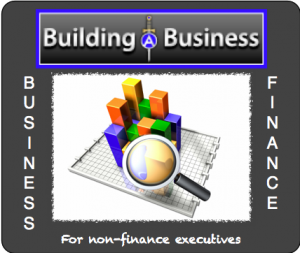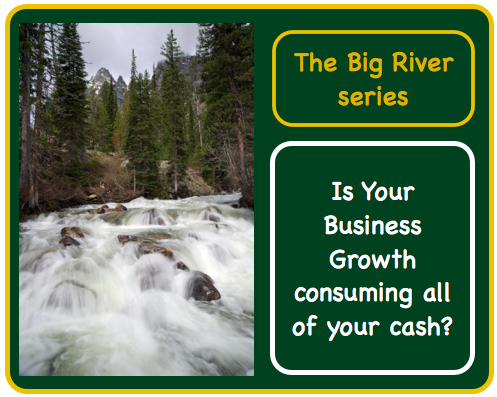A Weekly Business Finance series for Non-Finance Executives!

____________________________________________
“All intelligent investing is value investing — acquiring more than you are paying for. You must value the business in order to value the stock.”
~ Charlie Munger
How important is valuation?

Valuation is the bedrock for investors
“Hi, Lary. I appreciate your coming by to meet in person to talk further about some of the issues we discussed a few weeks ago. Can we talk about valuation first, since that seems to be the foundation for conversations with prospective investors?
“Sure, John. I think you’ll find from our conversation that while valuation is one of the cornerstones for such discussions, your company’s performance, as well as its promise, is what really underlies any discussion about valuation.”
What you WILL do may be more important that what you’ve DONE
“I’m not sure I follow you, Lary. I understand the performance part – what we’ve done historically will have a lot to do with what the company’s worth, but what does the future have to do with our valuation now?”
“John, let me give you a brief overview of the valuation process, which I hope will make it clearer. As you’ve already figured out, valuation is as much an art as a science, and there are many subjective factors to consider. Certain judgments about future conditions in your industry, for example, and in the economy, can be thought of as ‘subjective’ information since nothing in the future is really ‘objective’.
There are also other factors relevant to the final valuation outcome like the purpose of the valuation, the calculation of “invested capital” and the various discounts that often apply. If we don’t get to those today, we’ll talk about them another time.
How is a company valued?
“In the meantime, let’s cover the two most prominent approaches to value a company’s shares. For each approach, a certified appraiser will select the appropriate method to apply based on the company’s characteristics. Once their work is complete, all of the findings will be taken into account to come up with a fair market value for the company.
The Market Approach looks at sales of comparable companies
“The ‘market approach’ looks for relevant information among public companies, or about the sale of comparable private companies. As you know, there is a gold mine of information available about public companies, but it is more limited for private companies. Appraisers are looking for public companies in your industry with characteristics similar to your company. They will then consider those stock prices and the relevant metrics that may apply to your business.”
“But there aren’t any public companies like ours, at least none we know about. So how is that going to help?”
“That’s only one method, John. An appraiser will also want to look at the sale of comparable private companies from the growing variety of databases available for this data.”
“Can you give me an example, Lary, to illustrate what you mean?”
Study the sale of comparable companies
“Sure. Let’s say that we find a few companies that were sold in the last 12 months or so, with about $20 million annual sales volume. Let’s further assume that they prices at which they were sold translate to something like 1.2 X revenues or 4.5 X EBITDA. We would then try to determine the comparability of your company to those examples.
- Do you use a similar distribution channel to sell comparable products?
- Are the general levels of profitability similar?
- Are the growth rates in the same ballpark?
- Etc.
Then you could apply similar metrics to get one estimate of value for your company.
The Income Method is another valuation approach
“The second approach is the “income approach”, which is usually the most important for private companies. That approach typically looks at the cash flow from future revenues and expenses based on a forecast that you provide, to arrive at a future value.
Then, that stream of cash flows is discounted at a rate that reflects the risk associated with achieving those cash flows. That’s why your company’s future ‘promise’ is so important.”
The importance of forecasting can’t be overlooked
“I see what you mean, now. I don’t think we’ve ever put together a real forecast, I mean we do some budgeting each year, but usually only to get some idea of our expenses. Is a complete forecast that essential?”
“In my experience, it is, John. For one thing, an investor is likely to ask ‘what are your plans for the future’ since they are rightfully looking at how their investment is going to be repaid … sometime in the future … with an appropriate rate of return. Responding ‘I don’t know’ isn’t going to work.”
“I see your point, Lary. Even though we can tell our story, without anything written that illustrates the revenue growth and profitability, it will seem like we haven’t done a very thorough job in evaluating our own future. I’ll sit down with Tom Sampson and hammer something out this afternoon.”
Where does the forecasting process begin?
“John, this is not something you’ll be able to cobble together in a few hours. You need to think carefully about your underlying assumptions for revenue and expenses, and make sure they’re well documented. You’ll also want to get some input from your leadership team about your plans, as well as the related cost structures and investments that might be required to support those plans.
The future investments that may be required to realize your plans will be critical to investors. Access to that funding will be important to the company’s future success and the likelihood that an investor will recoup her investment with an acceptable rate of return.
If you haven’t done it before, you’ll need to set aside some quality time to prepare a thoughtful and thorough forecast.”
Make sure you’re well prepared if you’re courting outside investors
“Getting investors isn’t as simple as I thought, Lary, but I think I understand why it’s important to get it right. I don’t want to give up more equity than absolutely necessary, but I see that the better job we do up front, the better result we’ll get. By the way, does all of this have anything to do with what my attorney mentioned about financial buyers vs. strategic buyers?”
“It all ties together, John. The next time we get together to review your forecast, I’ll show you a useful diagram to explain those principles. In the meantime, you’ve some work to do.”
____________________________________________
TO BE CONTINUED …
This is Part 5 of a 12 part series called the “Big River“. The Big River signifies the growth path that so many companies follow, or are seeking, and the dangers that lurk along the shoreline as the Big River races forward trying to consume everything in its path. Next week, an important valuation framework is included to help you understand the most important concepts that effect company valuation. Make sure you sign up now so you receive every update in this practical series.

